Hello Honey! NEWSLETTER June 2023
Hello Honey! NEWSLETTER June 2023
Hello Honey! NEWSLETTER June 2023
Hello Honey! NEWSLETTER June 2023
Hello Honey! NEWSLETTER June 2023
Hello Honey! NEWSLETTER June 2023
Hello Honey! NEWSLETTER June 2023

Hello Honey!
NEWSLETTER
_____________________________________________
June 2023
Good Morning from Vietnam!
We are in the middle of the Honey Season –
Wonderful warm weather in Vietnam.
The Bees swarm in Millions in the Mountains
To carry the valuable liquid Sweet Gold into their Hives.
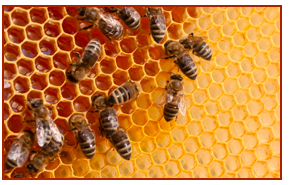
As we talk Bee Hives – has anybody had a look into these
Homes of the Bees yet? If they are artificially made by
Beekeepers or built by the flying Honey Collectors themselves?
We will tell you how the Bees build their Hives and what
A often mostly wooden human constructed one looks like.
Enjoy the Summer and our Viet Thanh Honey wherever you are …
Herby Neubacher
Communications
How they make it and how is life in a …
BEEHIVE
___________________
Often when you think of Bees, you might just think of how they buzz around or how they make that delicious honeycomb you like to snack on? Beehives are really incredible if you think about it. How do those small bugs buzzing around make their own entire shelter that is so intricate and well structured?
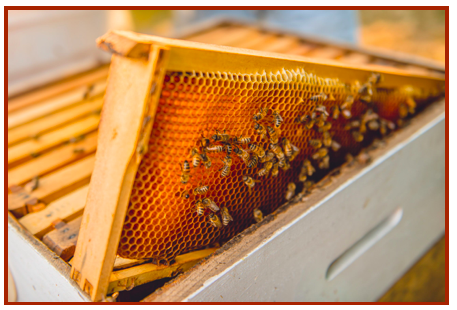
Even today, scientists, and quite frankly everyone, are questioning how the Bee population is capable of creating such geometric masterpieces. How Bees make their nests is an extraordinary achievement for an insect.
A hive is an artificial structure to house a Bee nest. Bees typically make their hives in straw, pottery, or wood. The structure is a densely packed group of hexagon shaped cells made of honeycomb and propolis. (Propolis is a substance collected by Bees from tree buds.) They then use propolis to fill crevices and seal parts of the honeycomb. It is also used at the entrance of their hives to keep Bees from bringing in harmful microbes by disinfecting the base of their legs.
Bees also collect propolis to use for embalming parasites and invaders into their Beehives. When small predators enter and Bees find it too difficult to remove them on their own, they will use the propolis after killing the predator by stinging them. This prevents decomposition, which is a health risk to the entire colony.
In the Cells of the Beehive, these tiny creatures like to store what they eat such as Honey and Pollen from the pollination process, as well as the offspring of the Queen in the Egg, Larvae, and Pupae Stages.
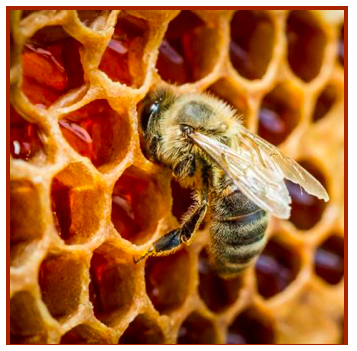
Beehives are made of six-sided tubes, shaped for optimal and efficient honey production; as such, Beehives require less wax and can hold more honey. Hives that are built out in the open are not sustainable. However, hives built in the heat that form junctions where combs meet will melt. So what are Bees to do? They must strategically plan and find the perfect location for their colony and Beehive.
Bees are smart in choosing a location to create and build their nests and will usually settle down anywhere that offers protection from nature’s elements. Once the location is settled, the construction begins from the top down. Worker Bees prepare the space by covering the Bee hive’s wall with a thin layer of propolis.
Bees will use propolis inside the hive at various stages of construction to help protect the colony from harmful germs and intruders.
The wax that has Been secreted is then chewed by the Bees until it becomes softer and can form individual cells, which are used to store pollen, nectar, honey, eggs, water, and larvae. The walls inside a Beehive can support thirty times their own weight. It also will contain honey in the uppermost sections.

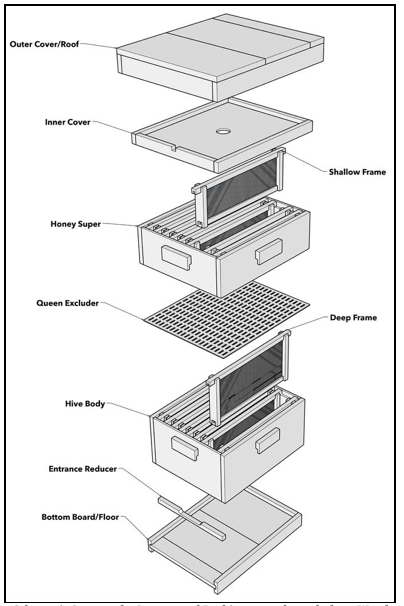
Schematic System of a Constructed Beehive – mostly made from Wood
Following the construction of the uppermost sections, the pollen is in the rows are below that, followed by worker brood cells, and drone Bees cells. The queen Bee’s cells are at the bottom of the structure. Once built, the hive only has one single entrance and will last the colony for several years.
Worker Bees make hives to store Honey and feed themselves throughout Winter.
When they cannot go outdoors to forage for food. Honey Bee hives are made of six-sided tubes, which are the shapes for optimal honey production because they require less wax and can hold more honey.
Some hives develop broods which become dark in color over time because of cocoon tracks and travel stains. Other honey Bee hives remain light in color.
Wild honey Bees make hives in rock crevices, hollow trees and other areas that scout Bees believe are appropriate for their colony. Similar to the habits of domesticated honey Bees, they construct hives by chewing wax until it becomes soft, then bonding large quantities of wax into the cells of a honeycomb.
When worker Bees crowd together within a hive, the hive remains at around 30 to 35 degrees Celsius, the temperature necessary to control the texture of the wax.
_______________________________________________________________________
By the way, did you know?
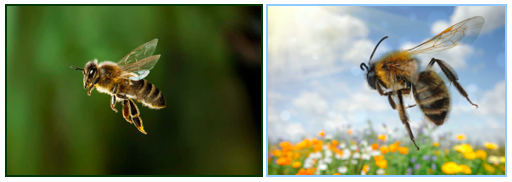
Aerodynamically the body of a Bee is not made to fly. Good thing is that the Bee doesn't know.
A Quote found on one of the NASA's headquarters wall. The law of physics says that a Bee cannot fly, each aerodynamic principle says that the width of its wings is too small to keep its huge body in flight; but the Bee doesn't know it, she doesn't know anything about physics or its logic, and it flies anyway.
Regardless of the size of it's small size of wings it beats the air into submission with it's small wings and gets that nectar to the hive and in the process unknowingly support the entire earth with pollination; the simplest act yet the most vital act for all the living organisms in the Mother Earth.”
______________________________________________________________________
Although worker Bees only live for approximately six weeks, they spend their lives performing tasks that benefit the survival of their colony. Around the time a worker Bee turns 10 days old, she develops a unique wax-producing gland inside her abdomen. Workers forage for food and gather nectar from different flowering plants. When they carry nectar within their pollen pouch, it mixes with a specialized enzyme.
After returning to the Hive, the Worker Bee transfers the nectar from her tongue to another Worker's tongue, where the Liquid from the Nectar evaporates and becomes Honey.
The glands of worker Bees convert the sugar contents of honey into wax, which oozes through the Bee's small pores to produce tiny flakes of wax on their abdomens.
Workers chew these pieces of wax until they become soft and moldable, and then add the chewed wax to the honeycomb construction.
The hexagonal cells of the honeycomb are used to house larvae and other brood, as well as to store honey, nectar and pollen. When Beekeepers extract honey from hives, the comb is easily left intact, though Beekeepers sell honey comb as well.
A standard hive includes a bottom board, a hive body or two containing frames, several honey supers containing frames, an inner cover and an outer telescoping cover that fits on top. The terms “hive body” and “super” are functionally interchangeable. They are both basically wooden boxes.
Bees are brilliant mathematicians. I'm sure you have noticed Beehives are perfectly shaped in a hexagonal pattern. Why? Because mathematically, a circle shape would be impossible to hold the amount of honey that they do.
Bees are efficient and want to store the maximum volume of honey possible. Further, the “curved” shape of the hexagon allows for no spaces and for each cell to be placed right next to each other. It's a perfect solution to this problem without wasting space.
Research shows the heat generated by the Bees during the construction process causes the comb to melt, which then causes the cells walls to flatten together and form hexagons.
The research does not show if this is done on purpose by the Bees or if it’s an accident. However, the research did, in fact, show that the Bees measure the depth of the cell with their bodies to prevent contents from dropping off. That is truly something amazing!
Just like Humans the Bee Population has a Hierarchy inside the hive.
- Worker Bees (female) and drones (male) are the two main types of Bees that live within the hive, along with the one queen Bee. A worker Bee tends to copy smaller cells, which are usually all neatly lined up and in good shape. However, they only live for about six weeks and spend their days doing tasks that benefit their colony as a whole.
- Drones usually get the cells at the bottom of the hive, and they do the least amount of work. The main job of the queen Bee is to lay eggs and ensure the working cycle and the survival of the hive.
- Queen Bees are chosen by the worker Bees and are selected most often by size. When the queen Bee is considered in “adulthood," she will begin mating with other drone Bees. Unfortunately, after this, the drone Bees die and the queen stores millions of sperm in her body that will last the rest of her lifespan.
When the queen eventually slows down in producing eggs, the worker Bees will raise more queen larvae and a new queen emerges. This leaves the former queen Bee to find a new hive or die. Harsh. This new queen Bee will take over the farmer’s duties and spread her pheromones throughout the hive to let the other Bees know that she is alive.
Bees are incredible insects that are a vital part of our ecosystem, and their complex ways of living continue to surprise.
Us at Royal Viet Thanh being able to harvest Honey that they make is just one of many great things about Bees!
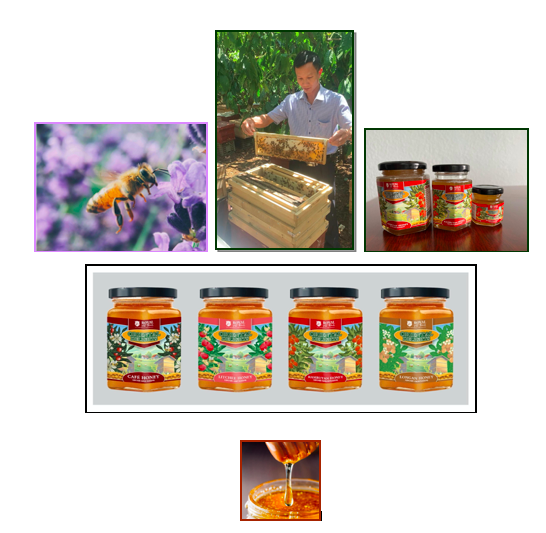
Brought to you by
ROYAL VIET THANH
HONEY EXPERTS
Contact:
Mr. Trung Thanh Vu
Founder and Co-Owner
Headquarter: 59 Truong Son Str, Tan Binh Ho Chi Minh City, Vietnam.
Factory: 153 Ho van Tang Str, Tan Phu TrungCu Chi District, Chi Minh City, Vietnam.
Direction Calling: +84-88 834 3333
Viber/WhatsApp: +84.888 34 3333.
Email: trungvu.vietthanhfood@gmail.com,
Website: www.vietthanhgroup.com.vn
More posts
Hello Honey! NEWSLETTER Anuga - 26/10/2023
Hello Honey! NEWSLETTER August 2023 - 18/08/2023
Hello Honey! NEWSLETTER July 2023 - 18/08/2023
Hello Honey! NEWSLETTER May 2022 - 18/08/2023
Hello Honey! NEWSLETTER April 2023 - 18/08/2023
Hello Honey! NEWSLETTER February 2023 - 18/08/2023
Hello Honey! NEWSLETTER February/ March 2023 - 18/08/2023
Hello Honey! NEWSLETTER January 2023 - 18/08/2023





